The Temple City
Pune is a city of Gods and Temples. Many Deities have temples dedicated to them. This article explores the heritage Shri Ram Temples in Pune that go back to the Peshwa period or earlier based on the historical records that I have been able to access. Pune then was a relatively small town compared to the huge expanse it has transformed into today. Pune was located on the southern bank of the Mutha River (northen bank comprising of Shivajinagar, Deccan Gymkhana was not part of Pune) comprising of approximately an area of four square kilometers. The nearby villages of Parvati, Bhambavde, Wananvdi, Erandwane. Ganeshkhind surrounded it. However these villages were distinct and not considered as part of Pune. In this small town there were more than three hundred shrines and temples dedicated to various Deities in the early 1800s.
The oldest temples in Pune around the16th Century were Kasba Ganpati, Tambdi Jogeshwari, Kedareshwar and the now non-existent temples of Puneshwar and Narayaneshwar. It is surprising that there was no prominent Shri Ram Temple that finds a mention among them. As late as 1774 we find no mention of a prominent Ram Mandir in Pune at all. Most of the Ram Mandirs were built in the later era of Peshwa Rule.
Tulshibaug Ram Mandir
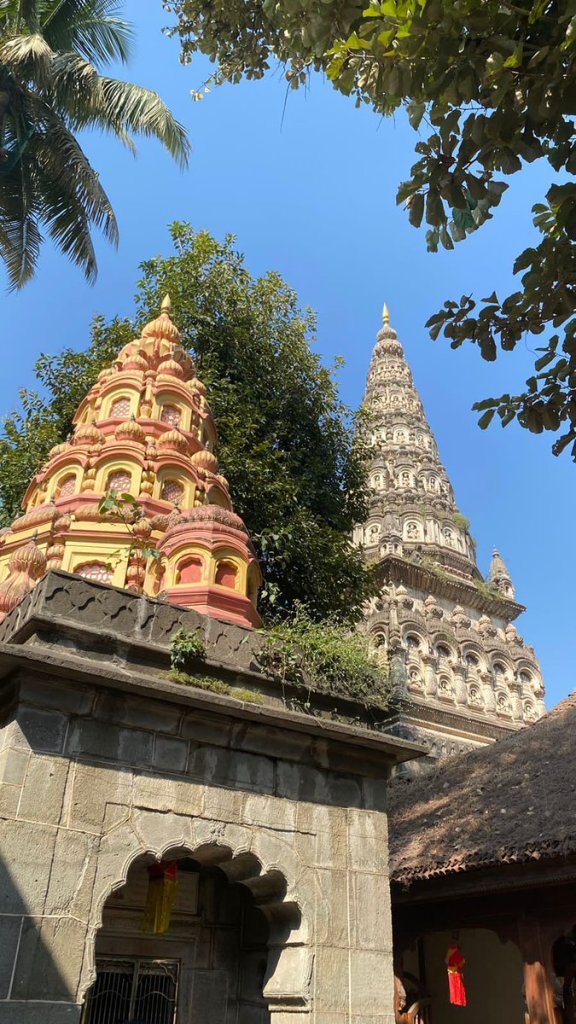
The Tulshibaug Shri Ram Mandir is among the most prominent Ram Temples in Pune. The Temple complex is set up about an acre, quite large considering that it is quite rare to find such large land parcels in the most central part of Pune where it is located. The murtis of Shri Ram Laxman and Sita are most beautiful. At the far end of the Sabhamandap is the Daas Maruti murti made in black stone. It is easily among the most real life murtis of Maruti in Pune. The Temple was built by Naro Appaji Khire the subhedar of Pune during Madhavrao Peshwa’s time. It was during the period post Panipat when the city had grown despondent that this cheerful temple was constructed and it is very likely to have lifted the spirits of the city then. Though the Shri Ram Temple was completed in a year or two, around 1763, work on extending the temple structure and the complex continued for well over twenty five years. The Shikhar or superstructure of the temple is tall and goes up 43 meters with chhatris and upshaikhar organised in multiple layers. Till the time Mandai was built in 1885, this was the tallest structure in Pune. The Shikhar is rectangular as its base and morphs into a conical structure as it rises up. Stucco figures decorate the shikhar as it rises up. The wooden Sabha-Mandap in front of the Deities, built with timber is a very elegant structure. The high wooden ceiling is decorated with designs typical of the Peshwa era. Such decorative ceilings are referred as the ‘takhta-poshi’ meaning the embellished ceiling. The Ram Janma Utsav is very special and attracts devotees from Pune.
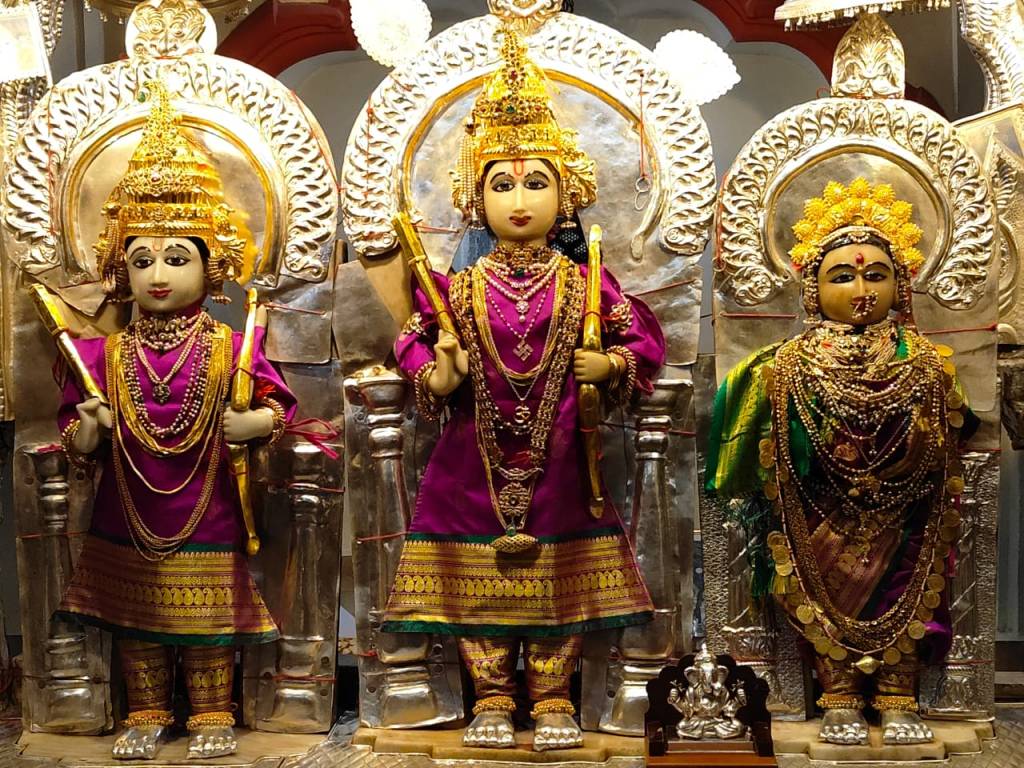
The Two Joshi Ram Mandir
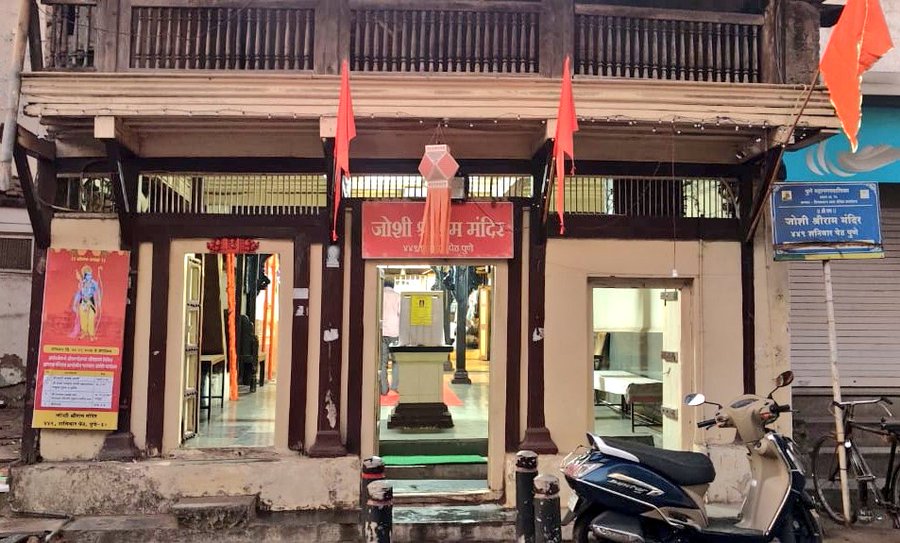
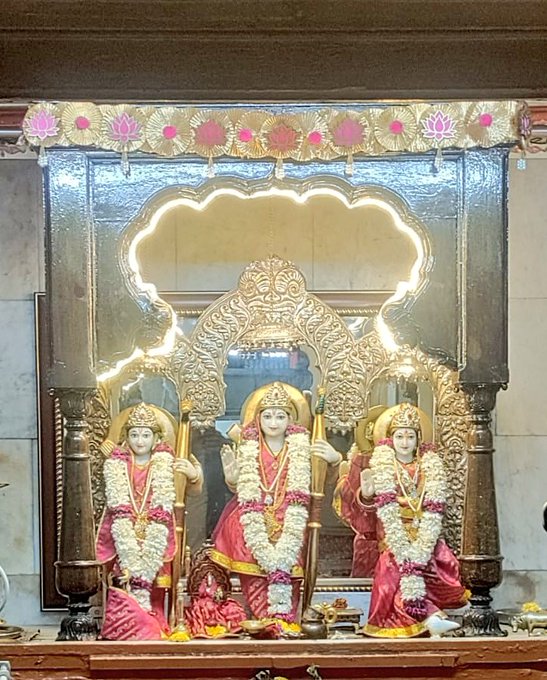
In Pune there are two Shri Ram Mandirs with the name Joshi Shri Ram Mandir. One of them is in Shaniwar Peth about a hundred meters from the wall of the Shaniwar Wada while the other is at Kasba Peth. Two distinct Joshi Families own the two different temples. The Ram Temple at Shaniwar retains some of its Peshwa era decorative wood work in the form of decorative pillars and patti.
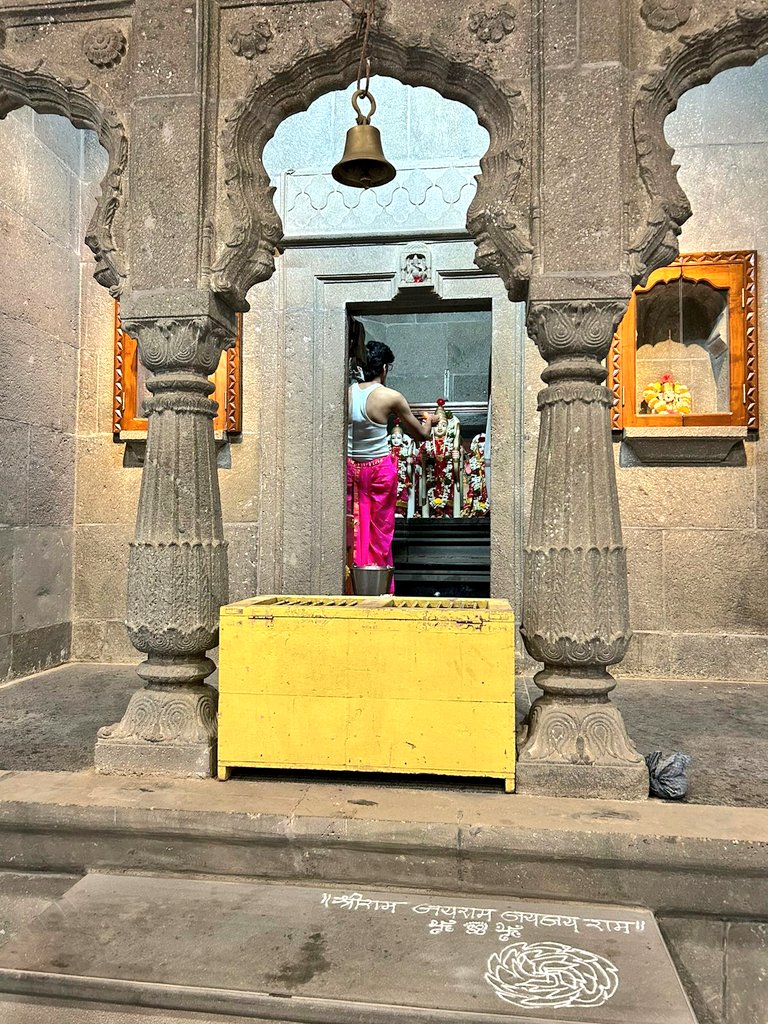
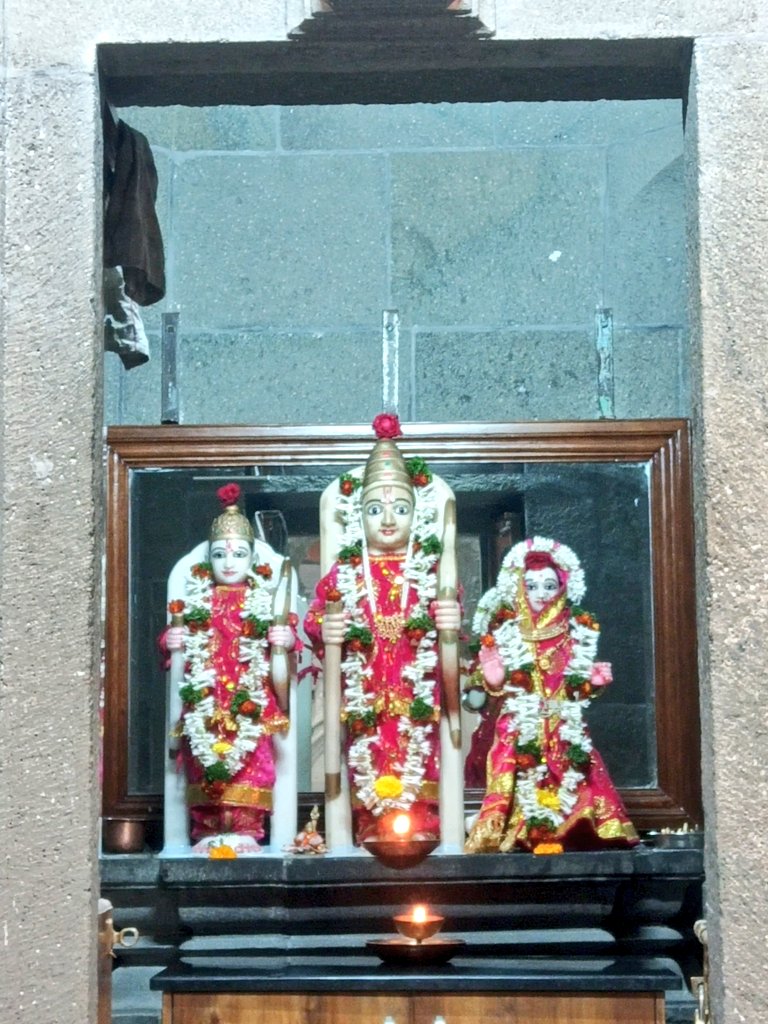
The temple at Kasba Peth is built in stone with the typical ‘suru’ pillars. The temple has recently been renovated faithfully retaining the heritage structure.
Ram Zopdi
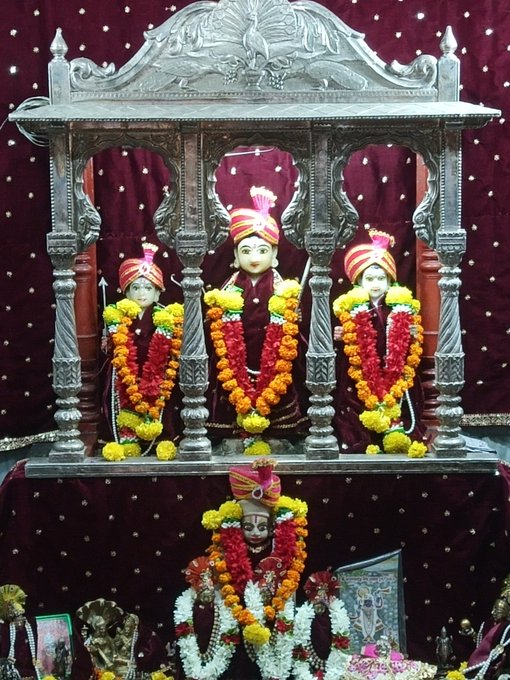
Raviwar Peth has been the ‘market district’ of Pune since the last two centuries. This Peth or ward was developed by the Peshwa to attract and settle the traders in the city. Within Raviwar Peth is an area called ‘Kapad-Ganj’ meaning the ‘cloth-quarter’ that had a large number of shops trading in cloth and textiles. The Someshwar Temple is located here. In a small area within this complex is the ‘Zopdi Shri Ram’ or the ‘Ram Zopdi’ temple. Zopdi in Marathi means hut. The name is quite modest for a temple. As narrated to me by my grandfather, this temple was historically nearby, but not within the Someshwar Temple complex premises where it is located now. The temple was located nearby, modest and similar to a small hut giving the temple this name. Later for for some reasons, the temple was relocated to the Someshwar Temple complex probably over a century ago. As per the Peshwa records there is a mention of Ramachandraji Devalaya south of Mansaram Badhai house in Raviwar Peth. Badhai or carpenters were important craftsmen who helped in construction wadas or homes in Pune. The lane adjacent to the Someshwar Temple Complex is Badhai Ale or Badhai Lane where this temple was probably located earlier. The Ram Zopdi has been cared for by priests who migrated to Pune many generations ago from the northern part of India.
Ram Temple: Amruteshwar-Siddheshwar Complex
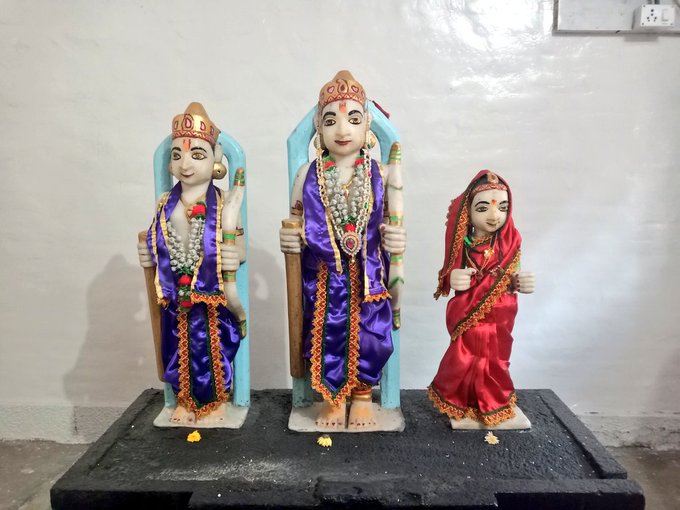
As you cross the road across the Shaniwarwada to the west and approaches the Mutha river, you can see the Amruteshwar-Siddheshwar Temple Complex of Temples. Temples of Amruteshwar, Siddheshwar, Vishnu and Shriram are located in this complex. A ‘sati’ platform in the memory of a lady from the Dhadphale family who committee sati is also seen here. The Siddheshwar temple was built by the Naik-Joshi Baramatikar, the family into which Bihubai the sister of Bajirao-I was married. This temple was built in Bihubai’s memory after her death around the mid 1700s. The Shri Ram temple here is much smaller than Amruteshwar and Siddheshwar temples located in this complex. The present structure of the Shri Ram temple seems to have been re-built much later in the modern era. The murtis of Ram Laxman and Sita are very beautiful and quite different compared to most temples. Given its proximity to the Shaniwar Wada it is very likely that the Peshwas may have visited the temple often.
Vaidya Ram Mandir
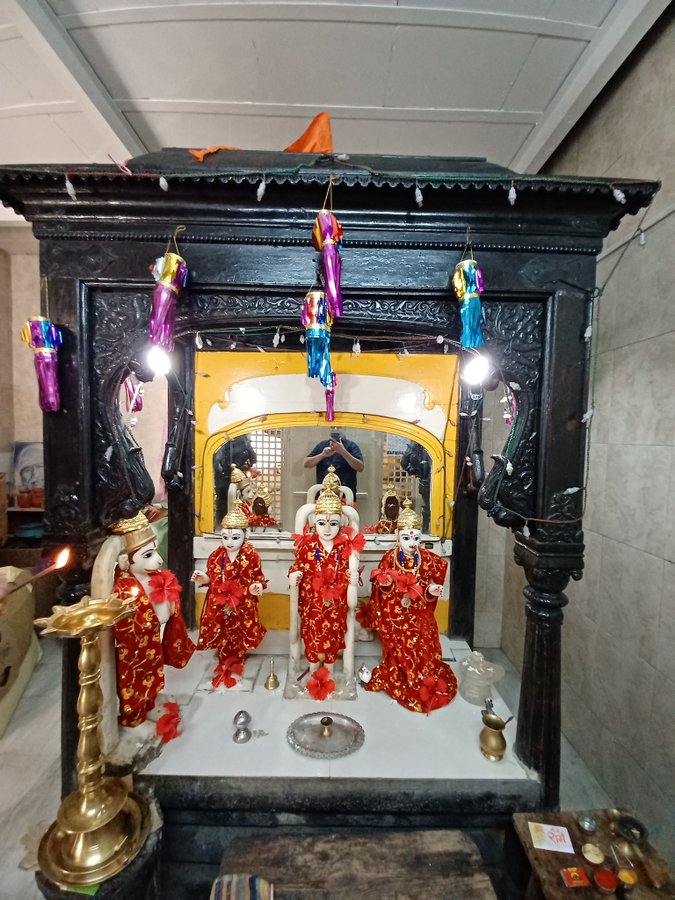
The Vaidya Ram Mandir is away from sight and behind closed doors of a wada at the Khan Ale. Only those who know of it or a few knowledgeable locals may be able to find it in the busy market where it is located. Vaidya was the Peshwa vakil or representative at the court of Bhonslas of Nagpur. Vaidya had acquired the property where the temples stands to recovery an unpaid loan that they had given to a person named Vinze, the earlier owners. The murtis of these Deities were brought from Varhad or Vidarbha region in 1811. The area where the temple is located underwent a lot of changes over the two hundred years, since the temple was established. Most of the property has been converted for commercial use. The Deities continue to be installed at the original location however in a considerably smaller place.
Kala Ram Mandir
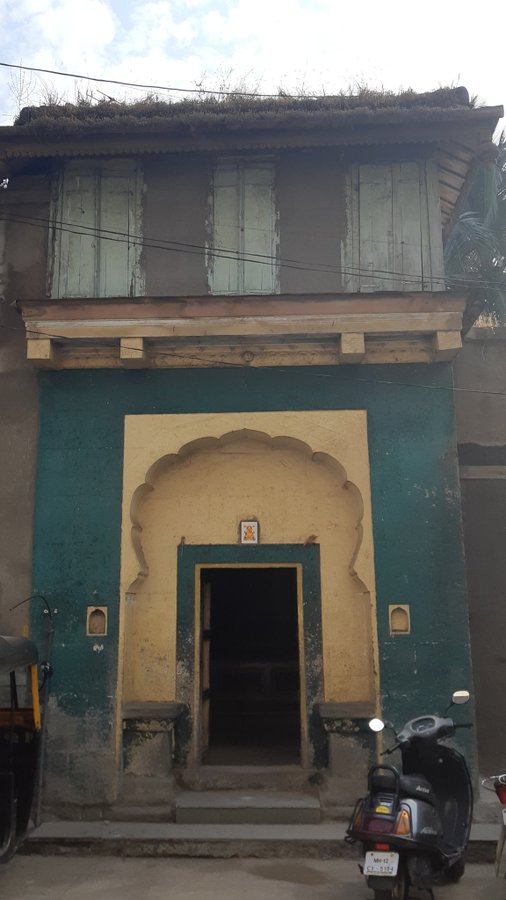
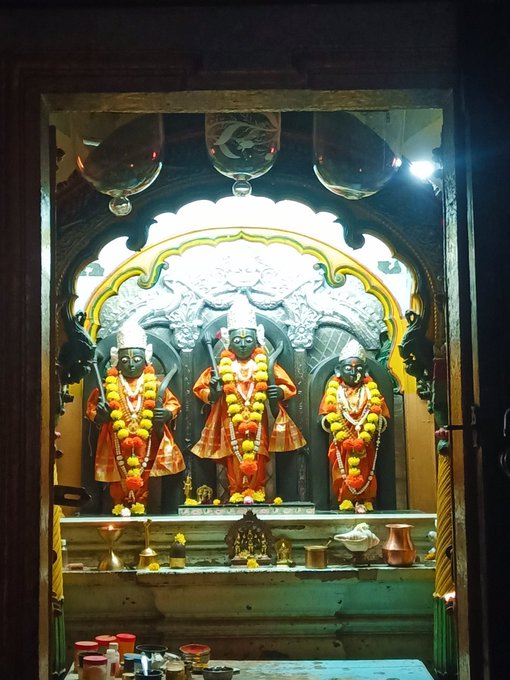
Kala Ram Mandir at Nashik is quite well known. However the Kala Ram temple at Pune is relatively unknow. Peshwa era records refer to the Ram temple in Somwar Peth. Though it was not referred to as the Kala Ram, most likely the records refers to the same temple. The entrance of the temple is typical of the late Peshwa era. Similar entrances are seen at the Khunya Murlidhar and the Kameshwar Temple. The Deities at the Kala Ram are beautiful murtis made from black coloured stone giving it the name Kala Ram. The Sabha Mandap is timber and within it stand a beautiful murti of Daas Maruti. The temple has retained the old word charm that brings peace and calm to the devotee.
Ram Mandirs in Guruwar Peth
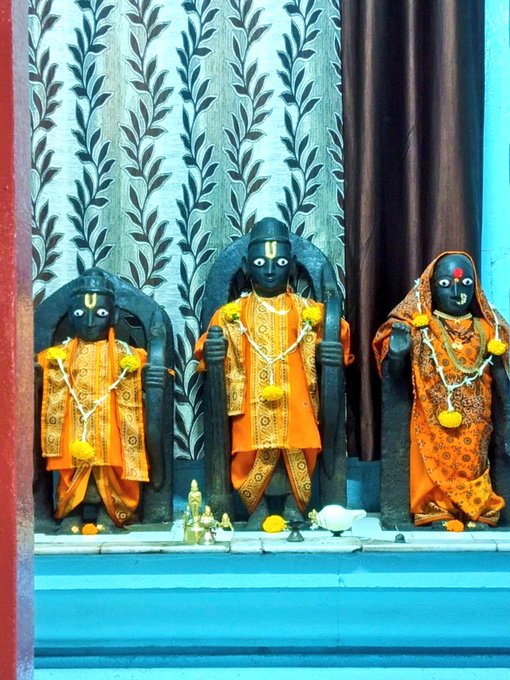
Historical records mention two Shri Ram Temples in Guruwar Peth during late Peshwa era. The old historical landmarks no longer exist. However it is possible to reasonably conclude the identity of these two temples. One of the temples is located at the Phulwala Chowk and appears like a wada from the outside. There are two temples when you enter inside – one is Mahadev and the other is Shri Ram.
The other Shri Ram Temple from Guruwar Peth is most likely the Madiwale Ram Mandir. This temple at Guruwar Peth is in the same lane as the Vetal Temple. The Ram Mandir cannot be identified from outside as it is behind a modern building. Inside, the Sabhamandap is reasonably spacious despite being ensconced within the modern building. This is a private temple and open to public on Ram Navmi.
Ram Mandir at Ganj Peth
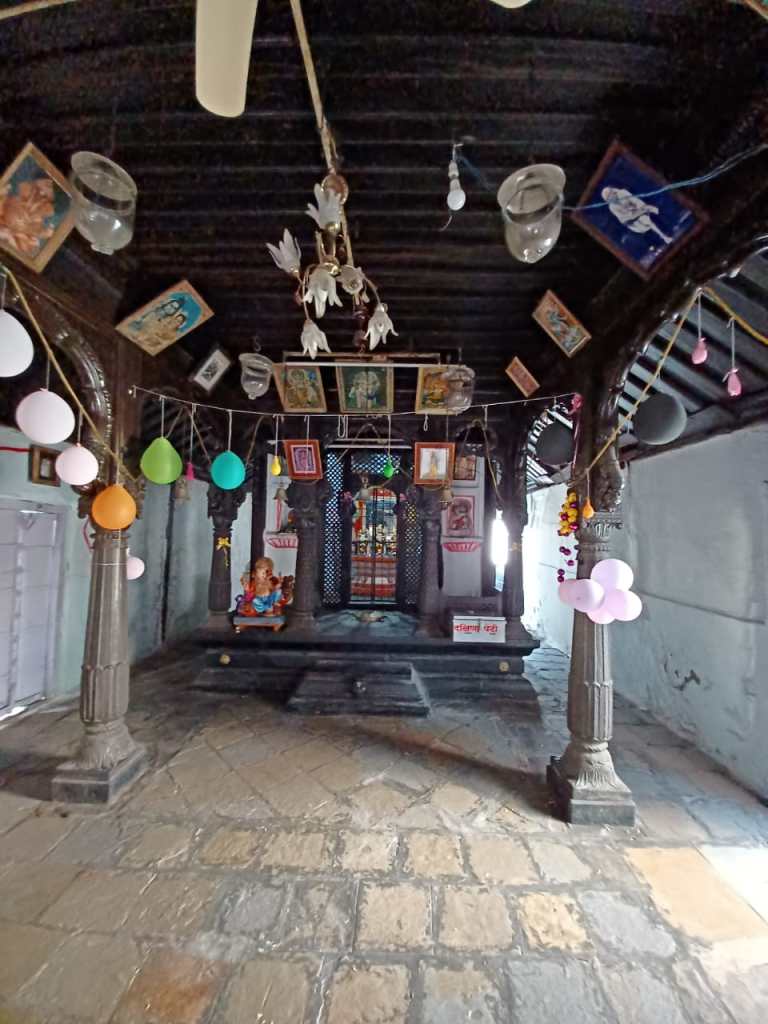
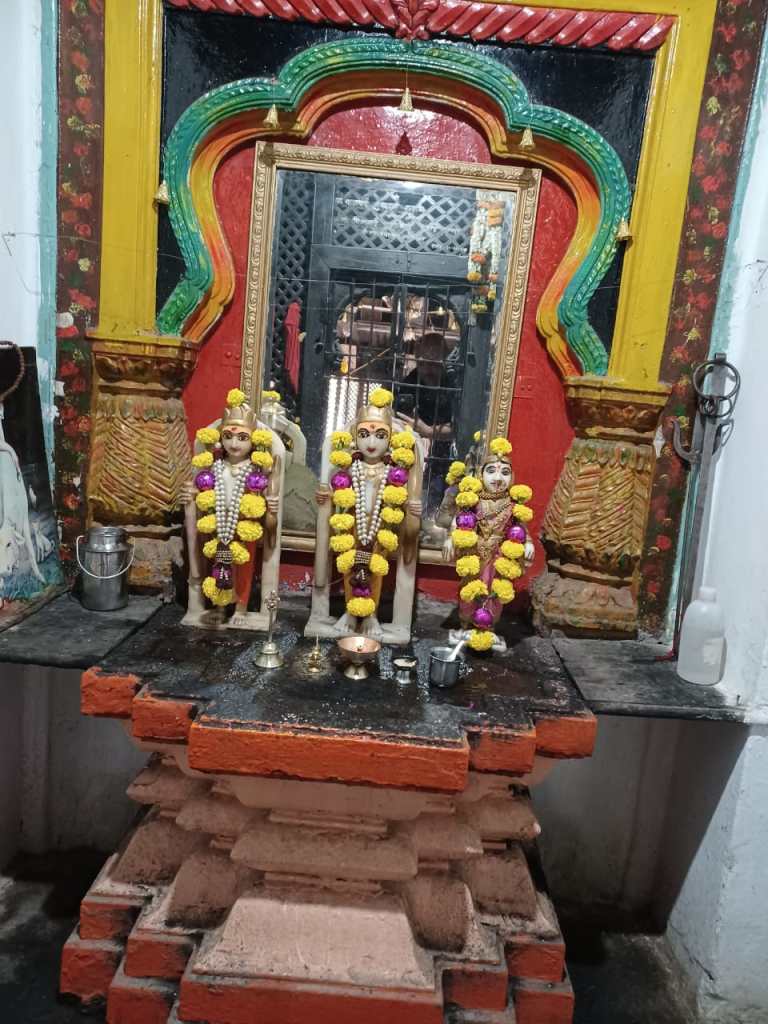
At Ganj Peth, in small lane that leads to Mahatma Phule Wada is a small Shri Ram Temple. The temple cannot be easily seen since the temple is located with its back to the lane. The Peshwa era document refers to the temple as the Ram Temple in Bhagwandas Bairagi Math. The temple is known locally as Godse’s Shri Ram Mandir after the family who owns the temple. As per the Godse family Bairagi was indeed the surname that the family used till a generation ago and that this temple has been with their family since a long time. The temple interiors are modest yet comfortable. Old style ‘suru’ pillars is a clear identification of the earlier era.
Ram Temple at Bhambawde Village
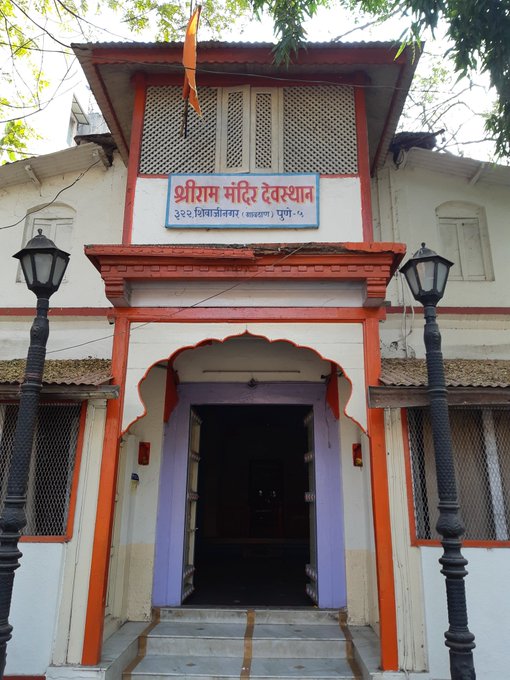
Historical records mention the Ram Mandir at Dwarkadas Bairagi House at Bhambawde or present day Shivajinagar. One can see a Shri Ram Temple opposite the Rokdoba Temple at the ‘gaothan’ area in Shivajinagar. It is said that this temple was established by a ‘shishyaa’ of Jangli Maharaj. Jangli Maharaj resided in an era after the Peshwas. If indeed the temple was established by the shishyaa this may not be the Deity referred in the Peshwa era document. However the possibility of the Deities existing from earlier times cannot be denied. More research would be needed to conclude on this either ways.
Akra Maruti
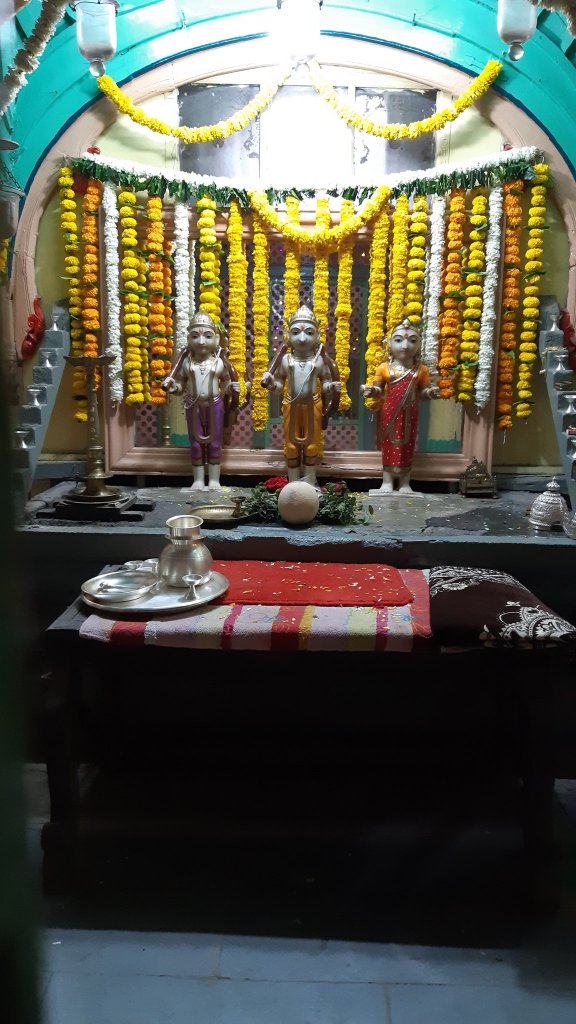
At Shukrawar Peth stands the Akra Maruti temple. The temple gets the name from eleven murtis of Maruti just outside the Ram Temple. The property where the temple stands was owned by Bapu Gokhale the last commander of the Maratha forces. This Ram Mandir there is not mentioned in the Peshwa era list I have referred in this article. It may be possible that the temple may have been built a few years later after the list was compiled. The temple is a simple single storied structure with Shri Ram at one end and Maruti at the other. The ambience has old era, simple, small town vibes.
Temples I have been unable to identify and locate
There is a mention of many temples from the Peshwa document that I have not been able to identify or locate. Information on these temples is given below. Information or leads should anybody know, would be most helpful and welcome.
- Shri Ram at the wada of Naik Thatte. This Wada was at present day Laxmi Road near the City Post office. I had found reference on the Internet that the murti were moved to Subhash-nagar Pune, however I have lost that reference and unable to find the reference again. Hence unable to back this up this claim.
- During the reign of Bajirao II there was a nobleman by the name of Rupram Choudhari. His wada was within Shukrawar Peth then and had a temple to Shri Ram and there were other Deities also. I have been able to identify possible locations of the wada. It may have been opposite the Jedhe Mansion or a bit further down the same road on the way to Panch Houd Mission. This wada was purchased by a prominent lawyer Mr Bhajekar, about a century ago. It is possible that we may be able to find somebody who may know Bhajekar Wada and thus conclusively identify the location. On the same road is a temple where Deities that find a mention as being located at Rupram Choudhari Wada, are seen. Is this merely a coincidence or were the actual Deities from the wada moved to this temple. I know not but someday I hope to find the answer.
- At Kasba Peth there is mention of a Ram Mandir near Tatyashet Majukar House. It is difficult to identify the location based on this description. I know of two Shri Ram Temples in Kasba – one near the Kal Bhairav Temple and the other in the lane behind Kedareshwar (Chavan Ram Temple). Could it be one among them, unless there is specific information we would not be able to say.
- At what was Shivpuri then or Rasta Peth of today there is a mention of Ram temple at Devbhat Apshingekar Wada. After more than two hundred years it would not be easy to locate it based on this description, however if we are able to identify a Shri Ram Temple near the KEM Hospital it may give us some leads for further investigation.
- Between the Daruwala Pul of today and Raste Wada was the Nyahal or Nagesh Peth. This Peth has been subsumed into Rasta Peth since then. There is a mention of a Shri Ram and Vitthal Rakhmai Temple in close proximity there. Any leads would be worth investigating.
- Behind the Dulya Maruti temple there is a mention of Shri Ram Temple belonging to Baba Vidwajan. I have not been able to locate the temple yet.
- At Hanumant or Nana Peth of today is mention of a Shri Ram Temple. There is a temple at a lane parallel to Laxmi Road near the Nana Chavdi Chowk. The temple is called Maheshwari Ram in the present era. Is it the same temple, we would need to find out.
- At the Ganeshkhind Ganpati Temple there is a mention of Ram. I have not been able to locate the Ram Mandir at the Ganpati Temple. Any inputs would be most welcome.
Other Heritage Shri Ram Temples
After the Peshwa Era too there were many Ram temples that were established. Some of them are about two hundred years old and all of them atleast a hundred years old. These include –
At Sadashiv Peth : Raste Tai Ram Mandir, Gadgil Ram Mandir, Rahalkar Ram Mandir, Pandit Ram Mandir, Sadavarte Ram Mandir
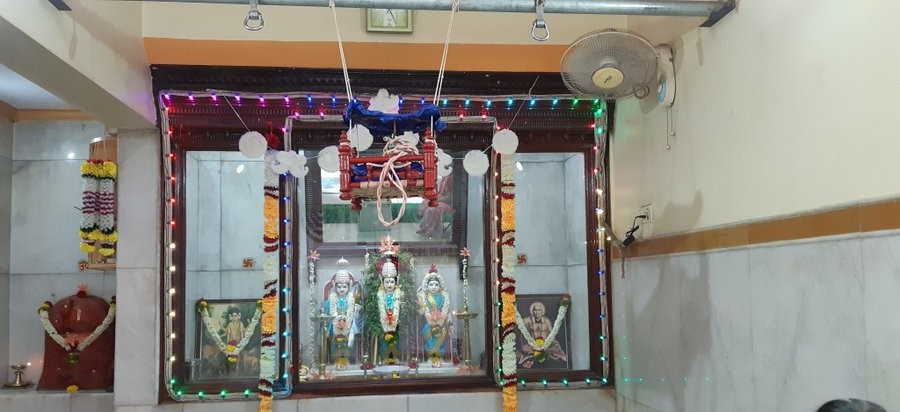
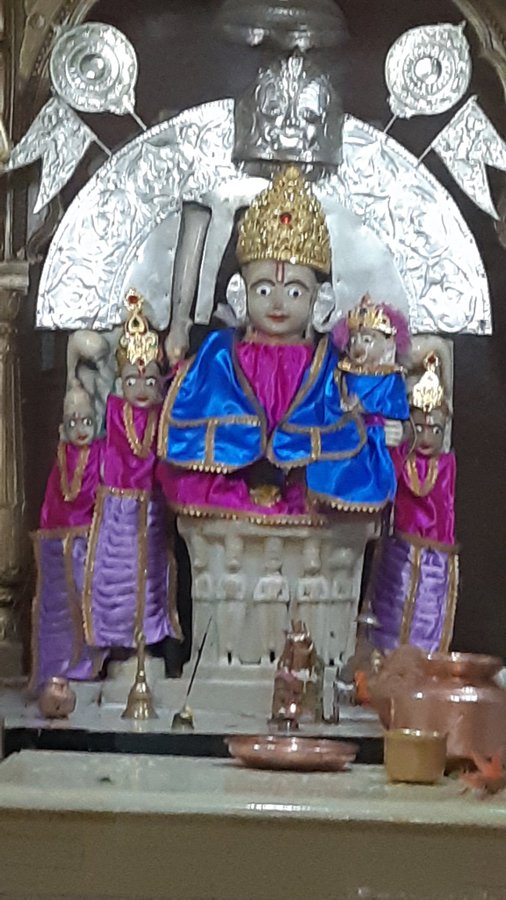
At Narayan Peth: Bhaji Ram, Likte Ram Mandir,
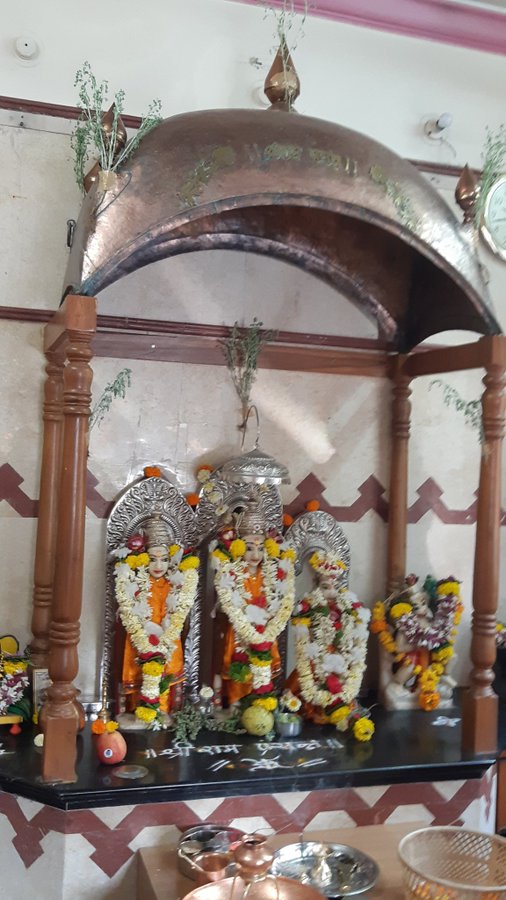
At Shaniwar Peth: Agashe Ram Mandir
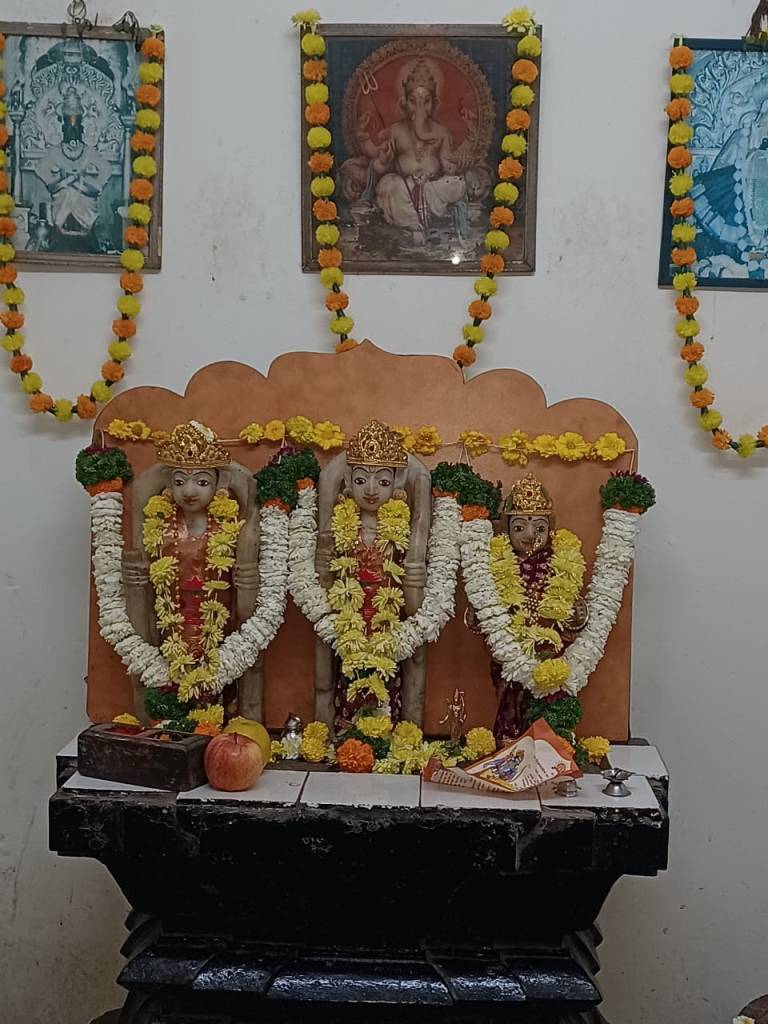
At Raviwar Peth: Sarnaik Ram Mandir
At Rasta Peth: Raste Ram Mandir
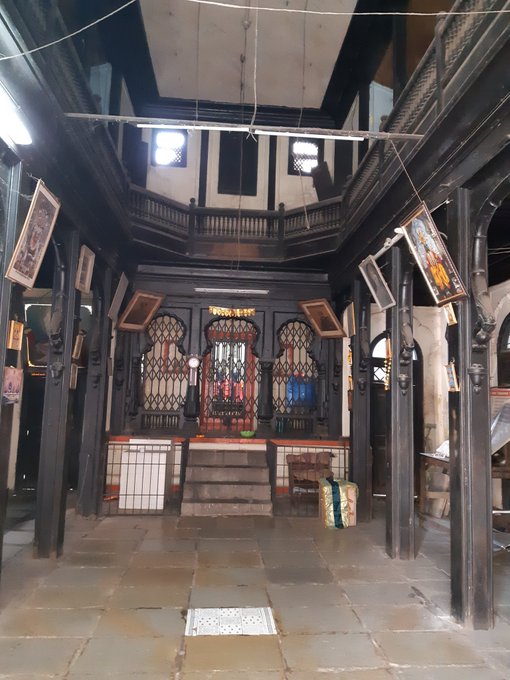
At Shukrawar Peth: Ramchandraji Temple (Naik)
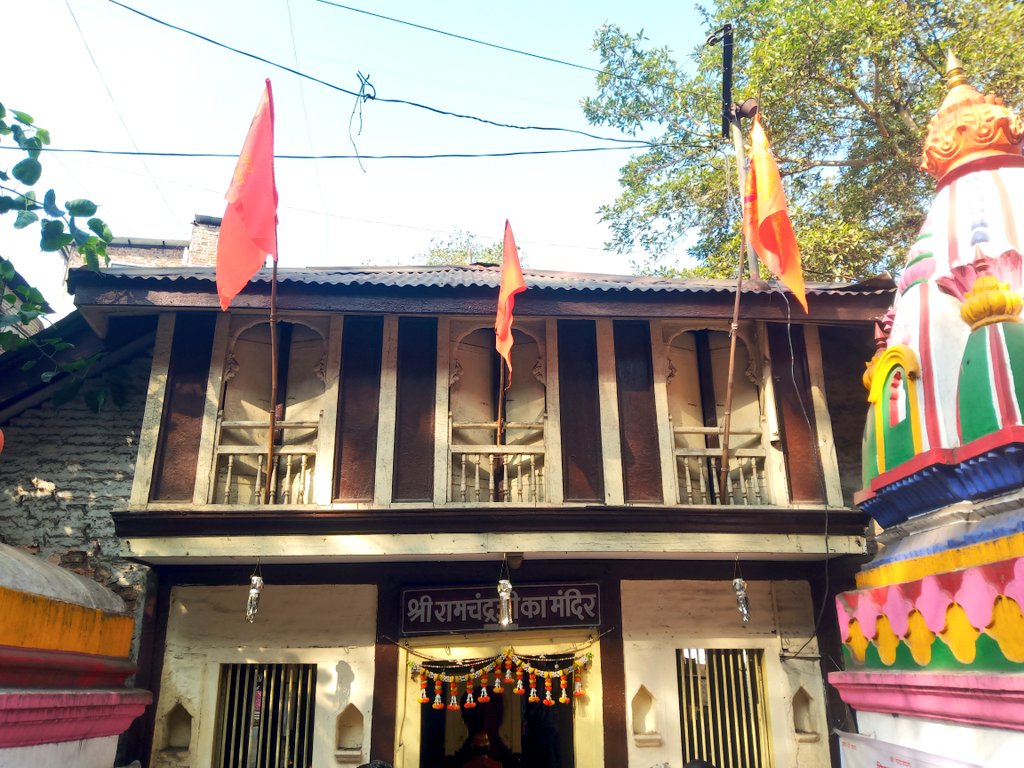
The heritage temples have a stories to narrate. There is much history that awaits to be told. Stories and history that remains undiscovered or remains to be narrated decays and is also lost. Each passing moment adds to the loss. The city of Pune has lost most of the older structures that have witnessed the times gone by. It is the temples that largely remain. If we lend an ear to what the temples tell us it opens up our undiscovered or forgotten history and heritage.
Great effort Sandeep for giving us a peek into history and heritage of the great Peshwa era and the Shri Ram temples. Whilst, during the childhood days, always passed by some of these temples, I would fold my hands in respect, little did I know about their interesting history.
I would also like to encourage you to make some videos, Reels and Shorts about these temples to reach out to maximum audience.
Regards,Amit Karode
LikeLike
Thank you Amit !
LikeLike
Very nice information Sandeep,if possible if you can make a vlog of this it will be easier to spread among others.
LikeLike
Thanks Girish good suggestion.
LikeLike
Good effort to valuable information.🙏
also there is one Old temple at MG road camp opposite Bata showroom
in next visit today will check the vintage of the temple and history.
LikeLike
Do you refer to the temple belonging to the Shimpi Samaj.
LikeLike
Great information about heritage Shree Ram Mandirs in Pune City.You are requested to give in detail such information about heritage Mandirs of Shree Hanuman and Shree Shivshankar
LikeLike